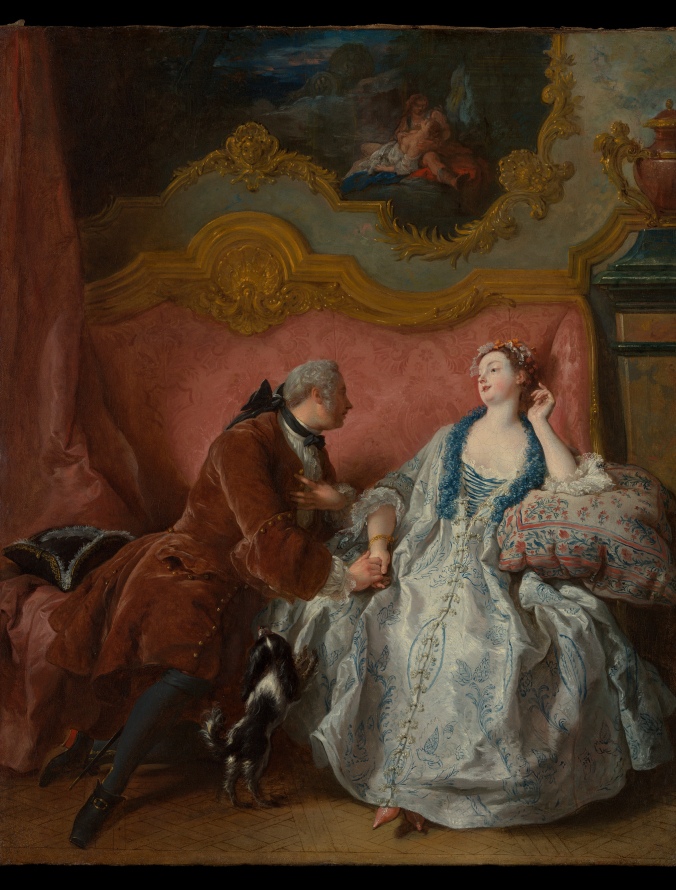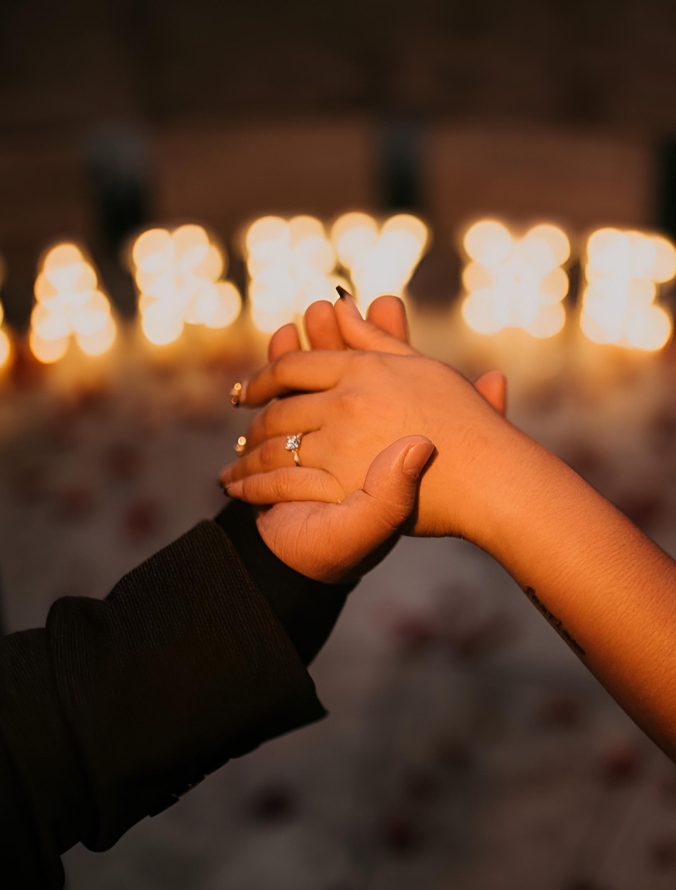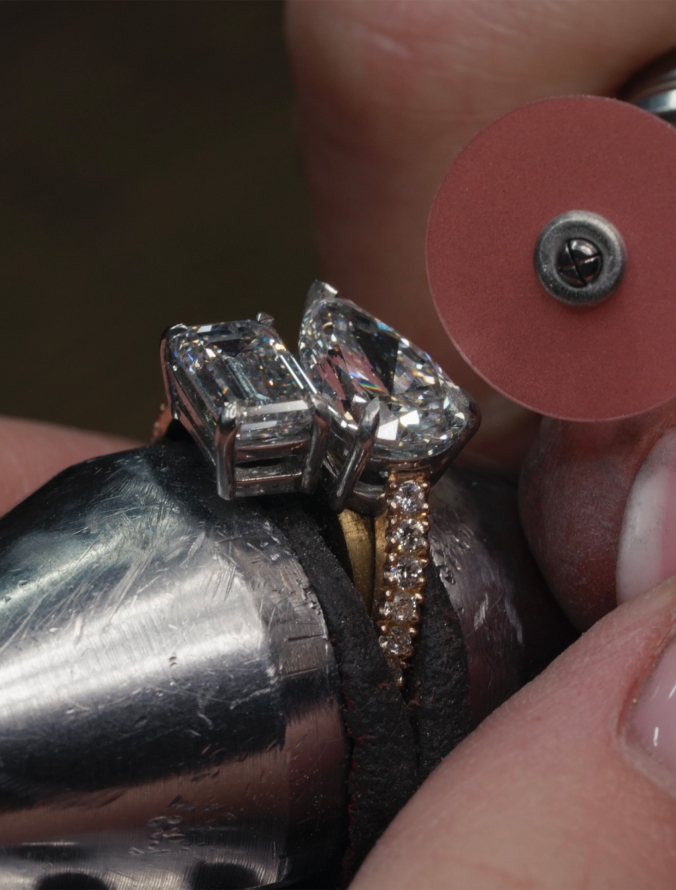
Engagement rings are a powerful symbol of love, commitment, and the eternal bond between two people. Worn with pride, they not only showcase your devotion to the world but are a beautiful piece of jewellery that will, if chosen well, bring pleasure to their wearer for a lifetime.
Despite their integral role in many romantic rituals, the origins of engagement rings are less widely known. Join us as we embark on a fascinating journey through the rich history of engagement rings, from their early beginnings to the contemporary trends that shape today's proposals. We'll uncover the reasons behind their significance, explore the essential dos and don'ts of choosing the perfect ring, and examine the evolution of engagement ring traditions over time.
In this guide:
The history of engagement rings

Engagement rings have long been synonymous with the promise of love and commitment. Although trends, styles, and even materials may have changed drastically over time, the sentiment of presenting your future spouse with a token of your love has endured through the ages. Let’s take a closer look at the full timeline of engagement rings, explore global traditions and spotlight some of the most iconic rings in history.
A timeline of engagement ring use
Although it may feel like a fairly modern concept, romantics living as far back as 200 BCE would have worn a ring to physically represent an emotional bond between two parties. Here is a rough breakdown of everything we know about engagement rings:
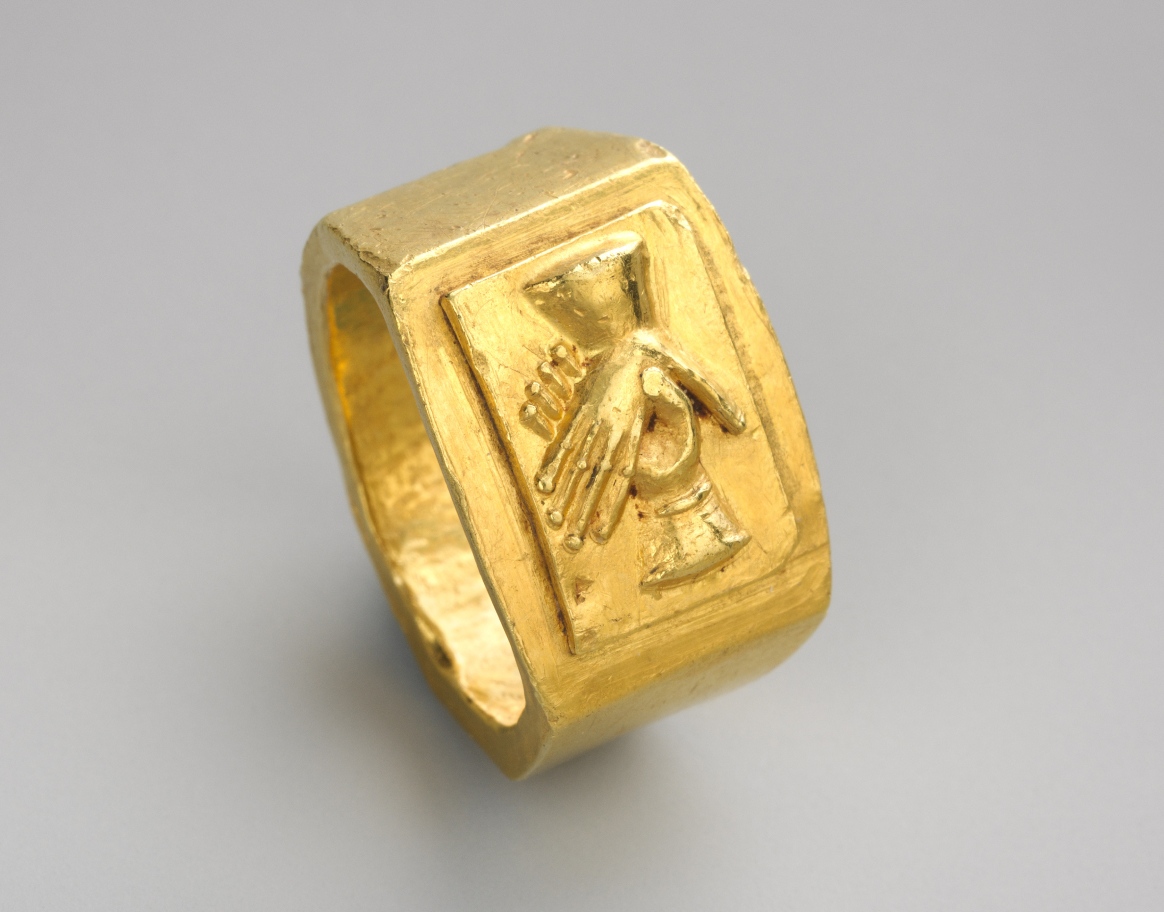
Rome (200 BCE)
The first confirmed example of rings worn as a symbolic gesture comes from Ancient Rome. These bands could be made from rare metals like gold or silver, or more common materials like flint and even animal bone. While rings could represent deep affirmations of love, they also held practical purposes – business contracts could be sealed with the exchange of rings.
Pompeii (79 BCE)
The archeological treasure trove of Pompeii offers fascinating insights into the customs and rituals of ancient societies. Among these discoveries were betrothal rings exchanged between lovers. Interestingly, evidence suggests that an iron ring would be worn at home, while a gold ring was used when out in public as a show of wealth and prosperity.
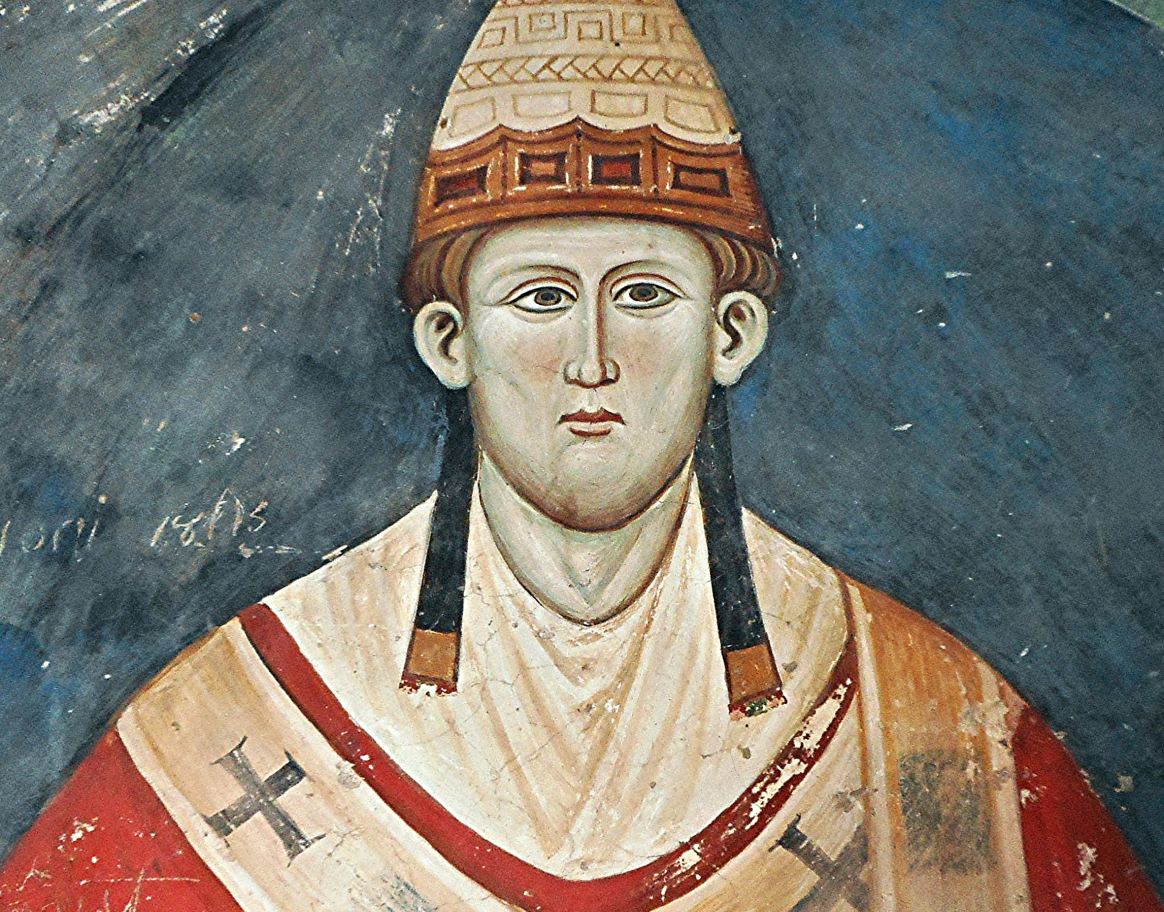
Pope Nicholas (850 BCE)
Pope Nicholas officially decrees that a ring was the appropriate way for a man to symbolise his intent and commitment to marry. The ring was determined to be a financial sacrifice, and during this period would most commonly be made of gold.
Pope Innocent III (1215 BCE)
The first official ‘period of engagement’ is introduced by Pope Innocent III. This enforced a mandatory waiting period between a betrothal and marriage.
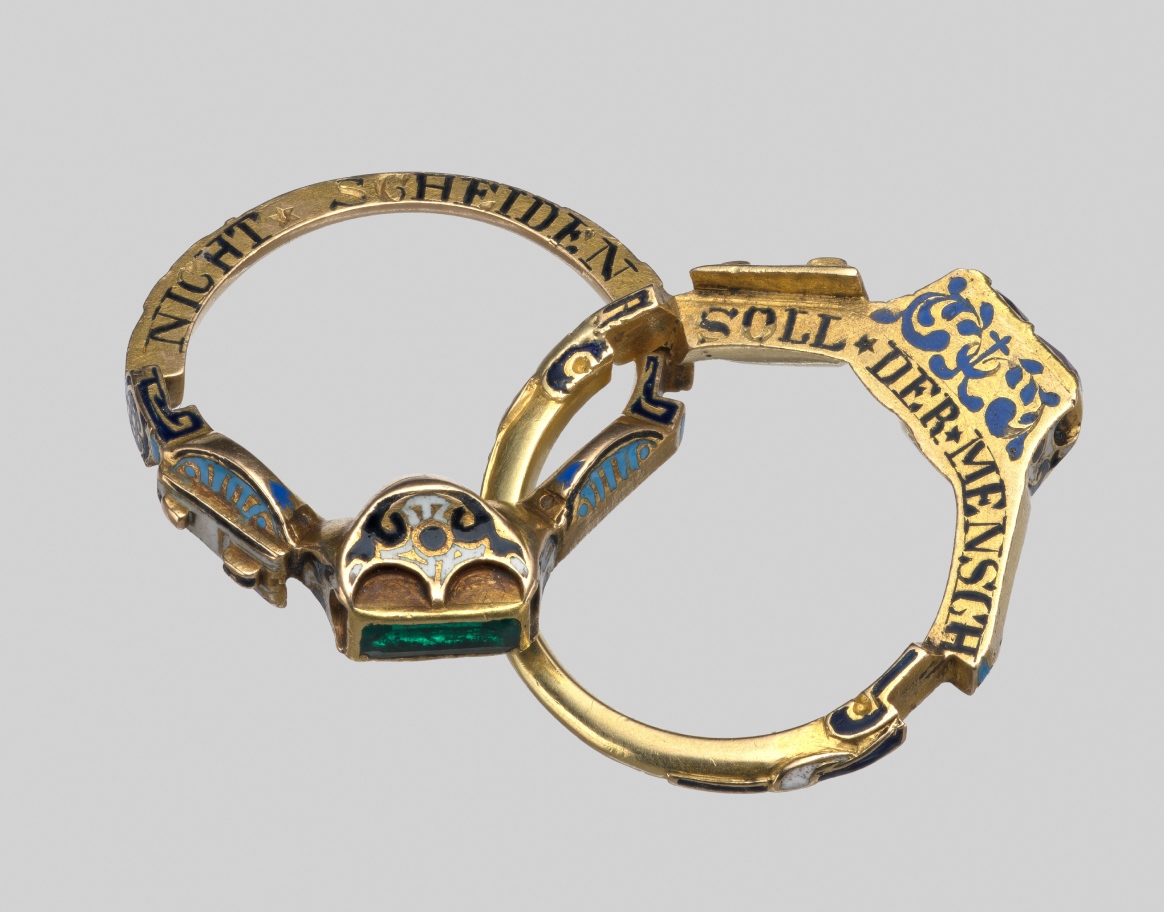
Archduke Maximilian of Austria (1477 BCE)
The first historic example of a diamond engagement ring is recorded. Archduke Maximilian of Austria proposes to Mary of Burgundy with a ring that’s mounted with diamonds in the shape of an ‘M’. This proposal would go on to have a huge influence on the jewellery industry – and is the inspiration for our company name.
Gimmel rings (1525 BCE)
During the 16th century, gimmel rings became popular amongst engaged couples. These clever items of jewellery allowed each member of the partnership to wear a ring during the engagement period, with the bands attached together during the marriage ceremony to form a single piece. This would then be worn by the wife as her wedding ring.
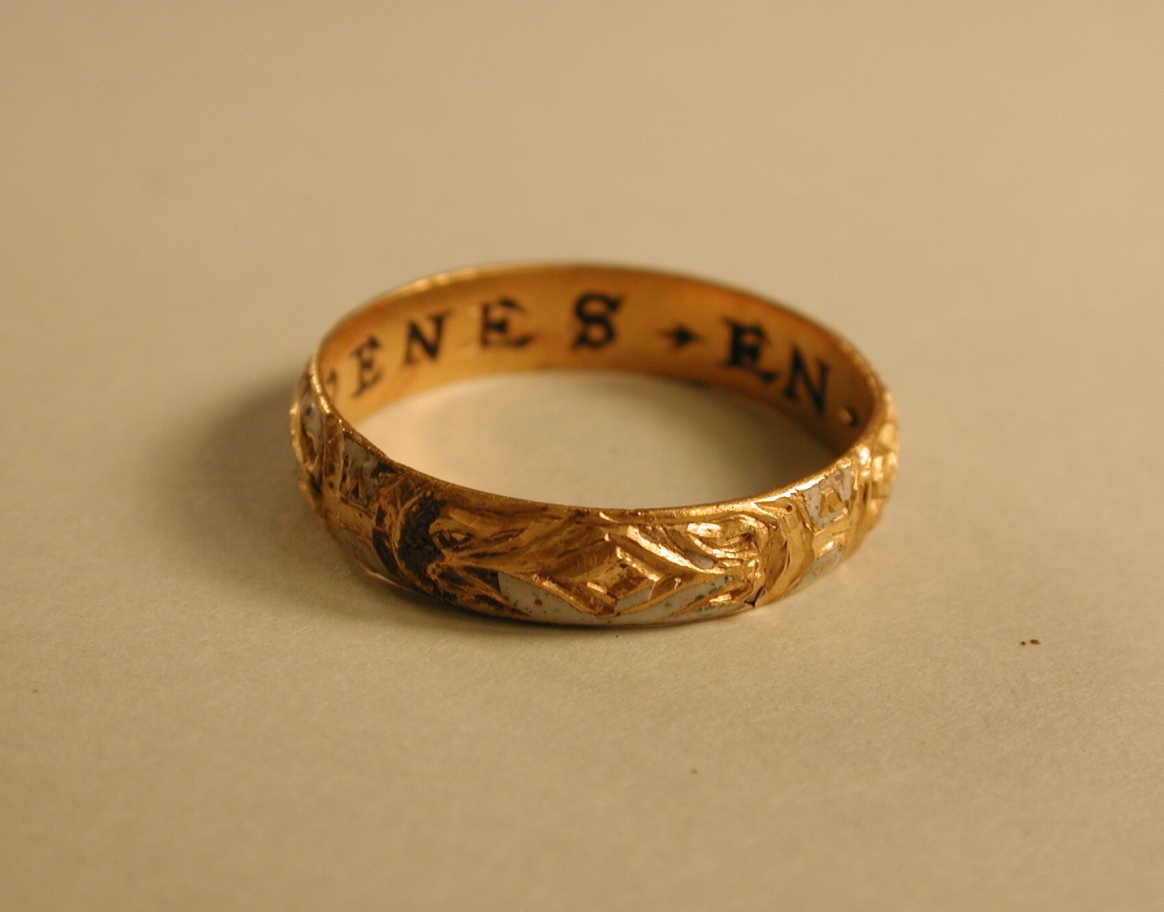 Source: The Portable Antiquities Scheme/ The Trustees of the British Museum
Source: The Portable Antiquities Scheme/ The Trustees of the British Museum
Poesy rings (1600 BCE)
Silver posey engagement rings would be engraved with intricate designs, and often included a line of romantic poetry on the inside of the band itself. After a wedding ceremony, silver poesy rings would sometimes be exchanged for gold versions of the same design as a symbol of deepening commitment.
Puritan protestations (1650 BCE)
As rings became more lavish and decadent, as well as becoming more closely tied to Catholic elements of marriage, the Protestant Puritans attempted to ban the wearing of both engagement and wedding rings. This would ultimately fail.
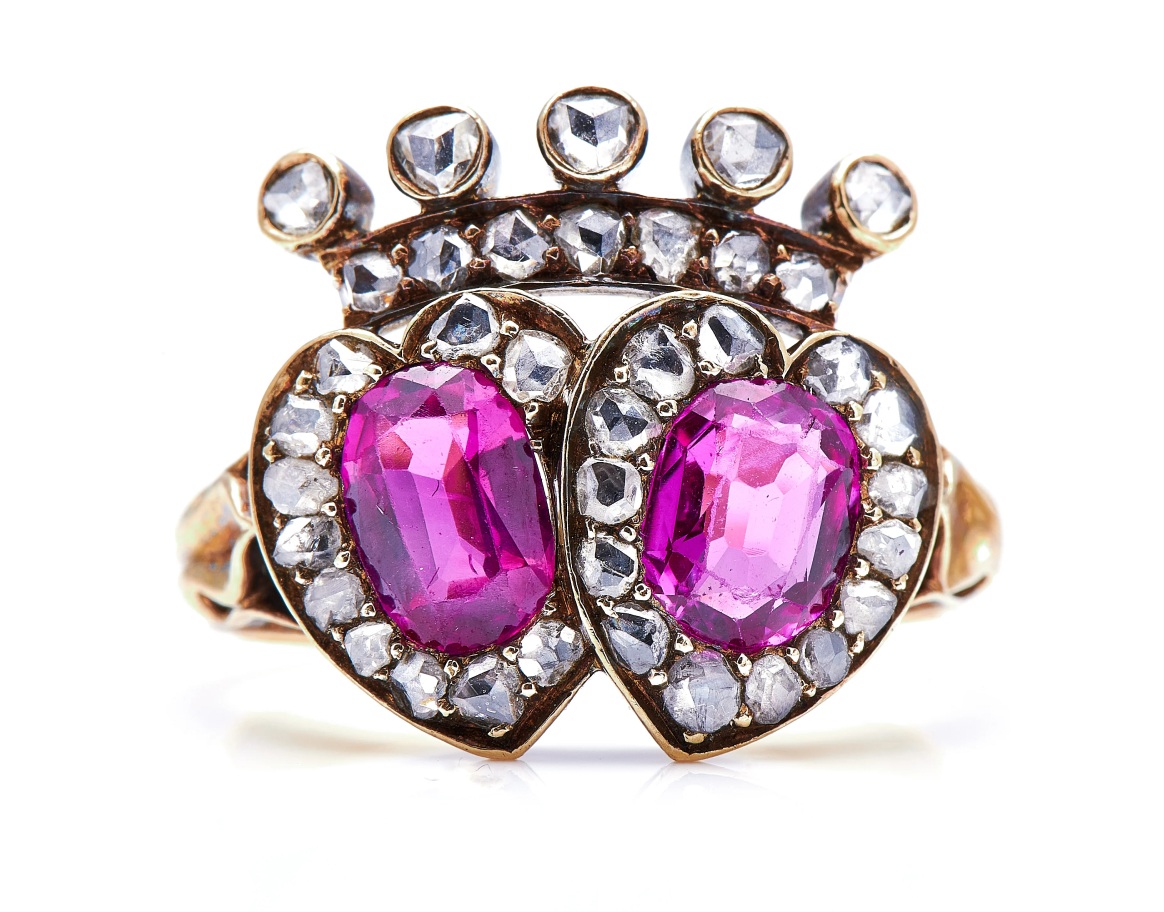 Source: Samuel Mee
Source: Samuel Mee
The emergence of diamonds (1800s BCE)
The Victorians begin to use diamonds as a symbol of wealth and high standing in society. They also started using contrasting colourful gems to enhance the brilliant natural whites of a central diamond.
A diamond discovery (1867 BCE)
The discovery of a massive diamond deposit in South Africa significantly altered the landscape of the gemstone market. As the supply of diamonds increased, so did their availability and affordability, making them an even more popular choice for engagement rings.
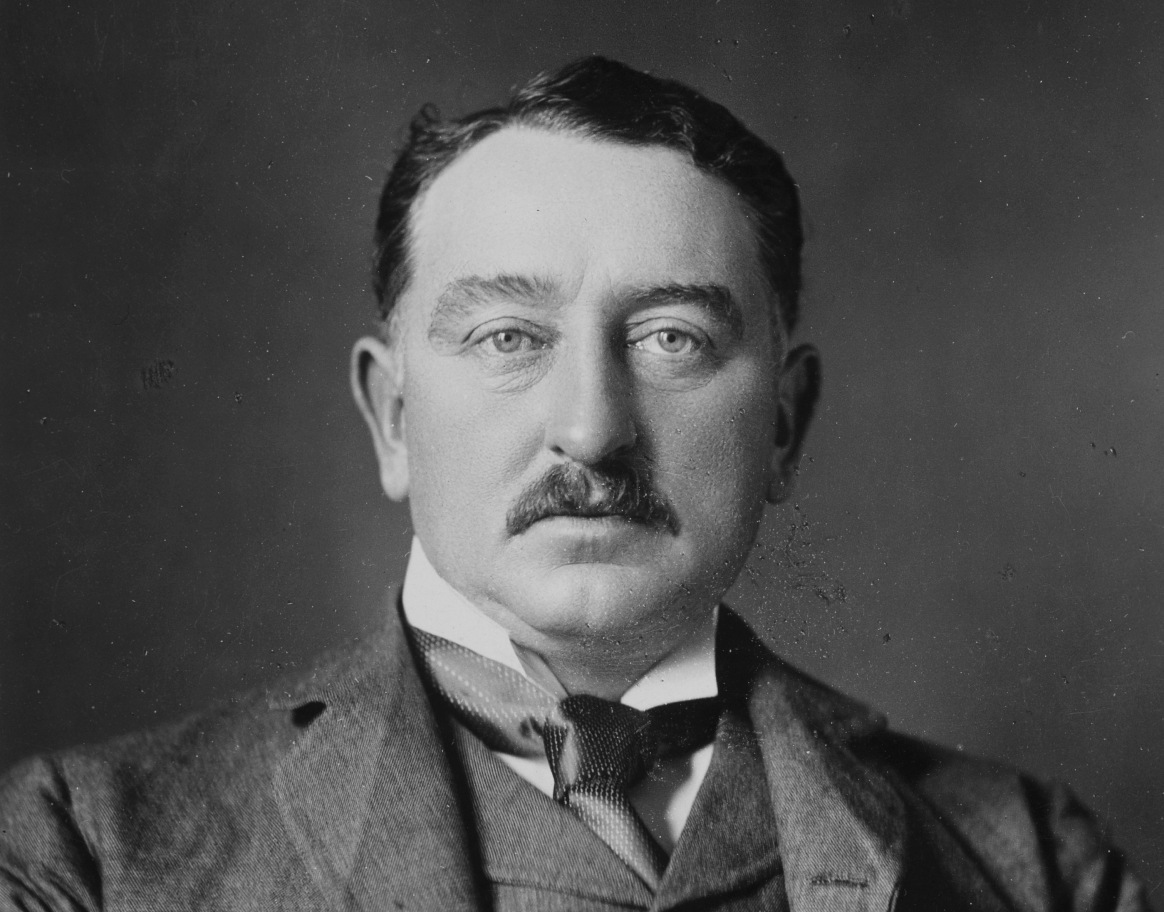
Cecil Rhodes makes diamonds more affordable (1880-1890 BCE)
Cecil Rhodes establishes the De Beers Mining Company, making the excavation of diamonds quicker and more efficient than ever before. The stones even became available for purchase in mail-order catalogues, offering consumers a convenient way to shop from the comfort of their own homes.
Oppenheimer campaign (1930 BCE)
With demand for diamonds faltering after the Great Depression, the De Beers Mining Company is bought out by the Oppenheimer family. An aggressive marketing campaign, endorsed by celebrities, sees the sales of diamonds rise by 50% from the beginning to the end of the decade.
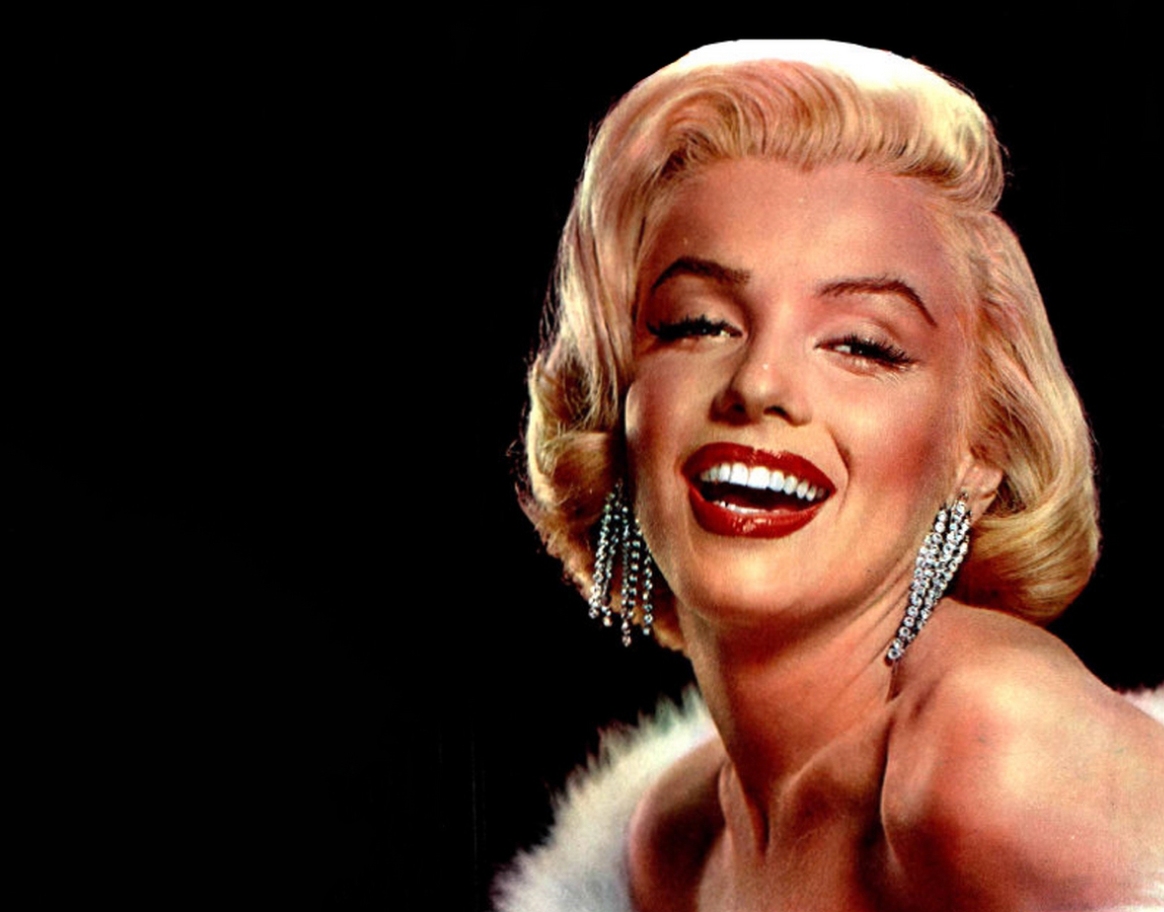
‘Diamonds are forever’ (1947 BCE)
Marily Monroe is used as the face of a marketing campaign which would leave an everlasting mark on the jewellery industry. The phrase ‘A diamond is forever’ becomes synonymous with the elegance of the time period.
The diamond standard (1965 BCE)
By 1965, 80% of all brides in the US are proposed to with a diamond engagement ring.
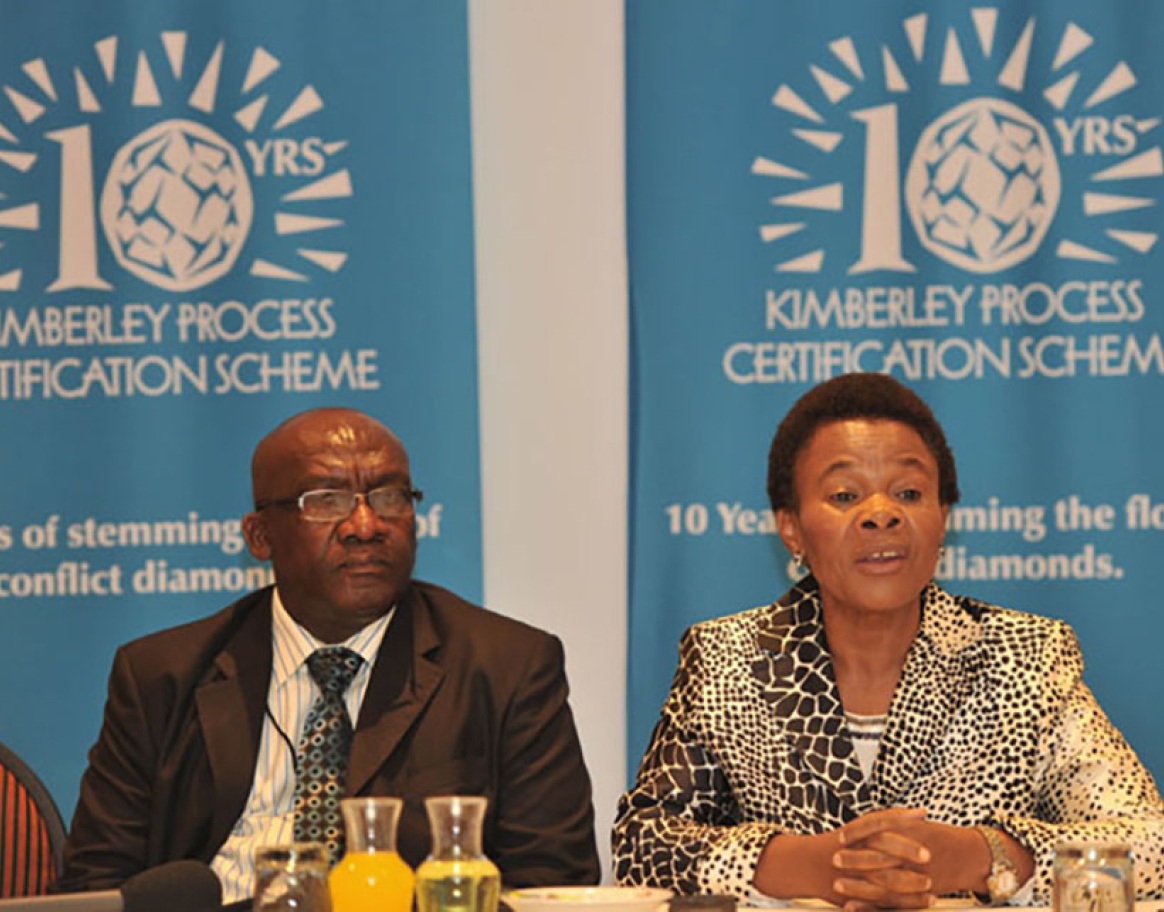
The Kimberley Process (2000 BCE)
The rising popularity of diamonds for engagement purposes inadvertently drives unethical working and mining practices. In 2000, The World Diamond Council instigated the UN-backed Kimberley Process to stop the exploitation of miners.
A timeline of engagement ring use
Although it may feel like a fairly modern concept, romantics living as far back as 200 BCE would have worn a ring to physically represent an emotional bond between two parties. Here is a rough breakdown of everything we know about engagement rings:

The beginning of the century (1900-1919)
Edwardian bands were popular during this period, and would often be made with yellow gold or platinum. Laurel, ivy and oak leaves were common designs, with these dainty natural motifs used to emphasise the craftsmanship of the ring itself. Old European cut diamonds were the most popular central stone.
High society of the 20s (1920-28)
The Art Deco styling of the 1920s, coupled with an immense rise in personal wealth for the average person, gave way to extravagant and colourful engagement ring choices. The Asscher cut became increasingly popular, while sapphire, rubies, and emeralds (which worked perfectly for this type of cut) grew in popularity too.
The Great Depression era (1929)
As the Great Depression took hold, engagement ring trends reflected the economic hardships faced by many. Couples scaled back on the extravagance of the previous decade, with smaller diamonds and thinner bands becoming the norm.
Platinum prior to WW2 (1939)
Platinum was the metal of choice throughout most of the 30s, but was repurposed for the war effort, prompting a shift in the materials used for ring-making. Synthetic gems also provided a cost-effective and readily available alternative to traditional stones.
More with less in the war years (1939-45)
During WWII, yellow gold emerged as the leading band material, as people looked to make the most of what they had. For the wealthy elite, the cushion cut and solitaire centre stones became popular throughout the early-to-mid 40s.
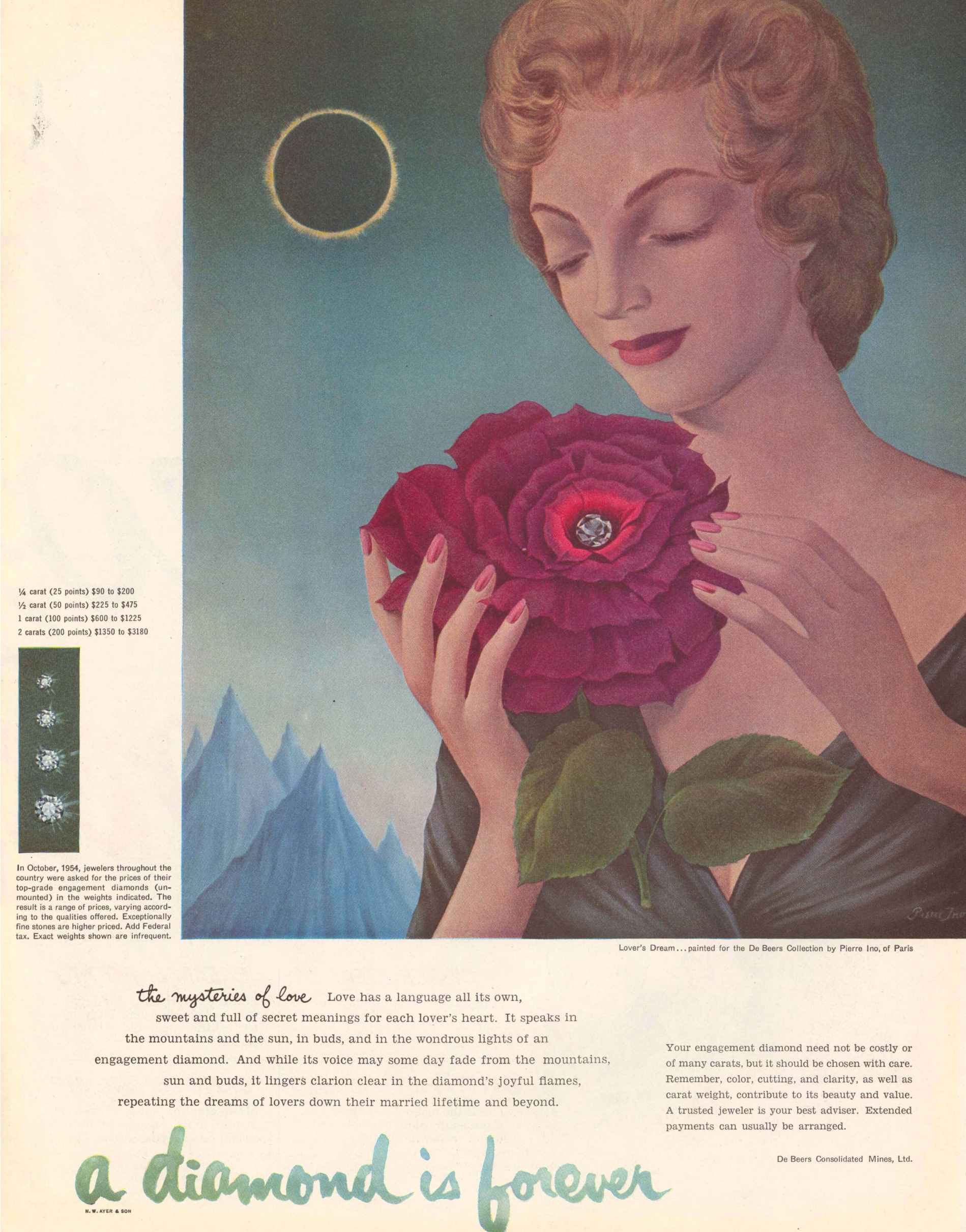
The 50s and late 40s (1946-1959)
As normality slowly began to return to the world, De Beers’ ‘a diamond is forever’ campaign led to a renewed surge in popularity for the precious gem. Sales soared, and the baguette became the cut of choice. High-profile engagements of Hollywood icons Marilyn Monroe, Elizabeth Taylor, and Jacqueline Kennedy inspired couples worldwide to emulate their style choices.
The 60s and 70s (1960-1979)
Simple cuts, such as the princess and solitaire pear-shape, became the norm in this era. Frank Sinatra proposed to Mia Farrow with a now iconic 9-carat pear-shape diamond.. Cluster style rings became more popular as the world moved into the 1970s, with the princess cut coming into its own. Rings of this nature were often worn as a solitaire or with tapered baguettes to the side. Matching wedding and engagement rings also became a trend in this period.
The 80s and 90s (1980-1999)
While yellow gold remained the most popular metal at this time, white gold and platinum bands saw a resurgence. But perhaps the defining feature of the time was the use of a coloured blue oval sapphire engagement ring, worn by Princess Diana (then, Lady Diana Spencer). This sparked a huge rise in demand for coloured gems. In the 90s, it was a different celeb influencing the masses as Victoria Beckham’s marquise cut influenced more couples to opt for understated designs.
The 00s, 10s and 20s (2000-2024)
Halo rings were the defining style at the turn of the century, while coloured diamonds became popular amongst the rich and famous. J.Lo and Paris Hilton were both proposed to with coloured gems – although neither brides-to-be would ever make it to the altar.
The 2010 engagement of Prince William and Kate Middleton, featuring the iconic ring previously used by Prince Charles to propose to Diana Spencer, rekindled the world's love affair with coloured gemstones.
The 2020s began with unprecedented challenges brought on by the pandemic, leading couples to reevaluate their engagement ring choices. Despite the economic uncertainty certain trends have emerged, with ruby and garnet cuts gaining popularity. Solitaire rings and oval cuts continue to be popular options, demonstrating the enduring appeal of classic designs.
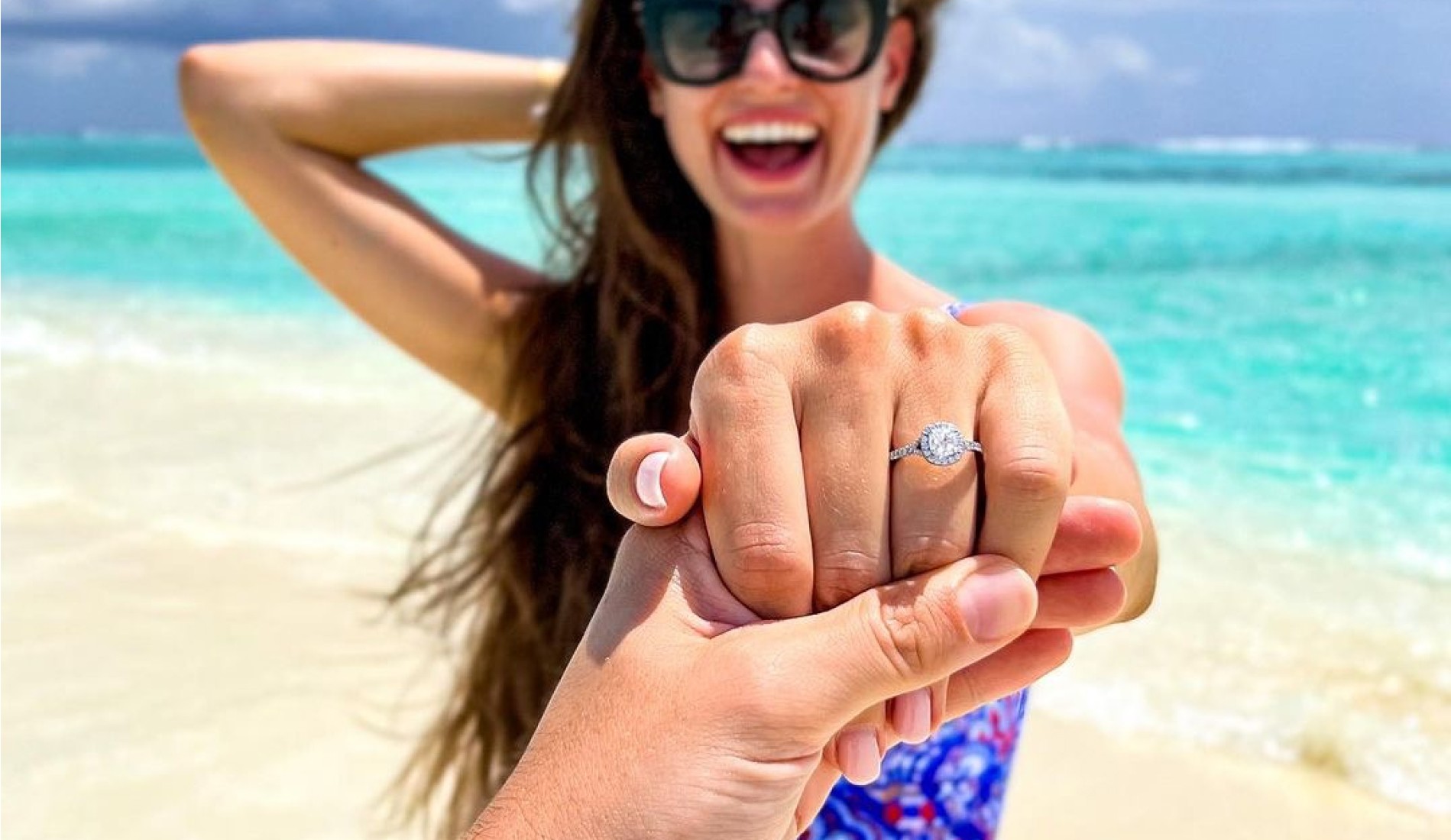
Engagement ring traditions across the world
Engagement traditions vary greatly across different cultures and regions, adding a rich diversity to the global tapestry of love and marriage. Here are some of the most interesting and timeless engagement traditions found across the globe:
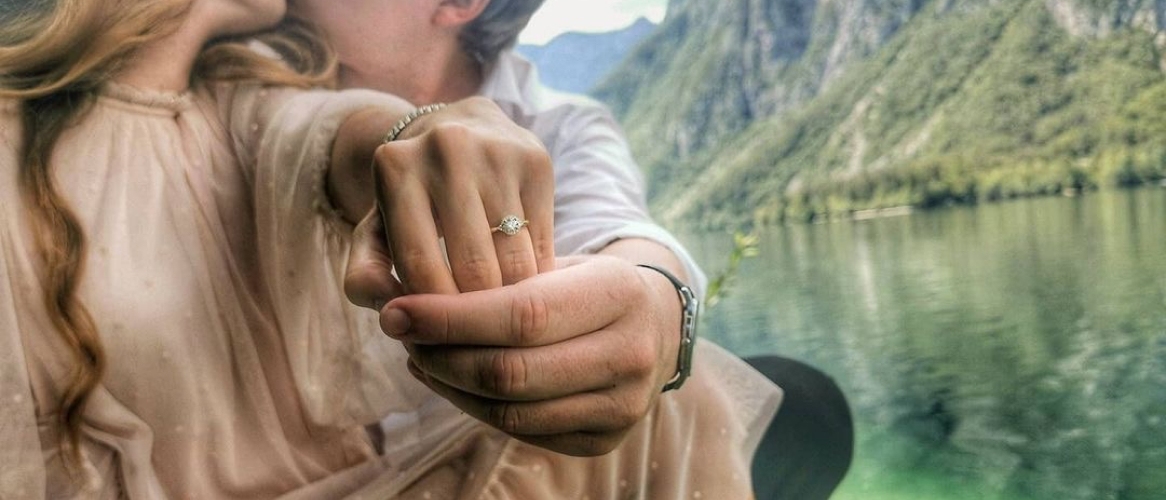
Central and Eastern Europe
While engagement rings are traditionally worn on the left hand, many countries in Eastern Europe opt to use the right instead. The origins of this tradition are rooted in historical and religious beliefs. For example, in Orthodox Christianity, the right hand is considered the ‘hand of honour’, symbolising strength and purity.
Kenya
Ornate bead work has always been a hallmark of Kenyan artisan culture. This rich artistic heritage often manifests in stunning jewellery designs, where intricate beadwork replaces conventional gemstones.
Chile
In the South American country of Chile, it is and has always been the norm for both the man and the woman to wear an engagement ring. While it’s still the role of the man to ask for his bride’s hand, both parties are recipients of the fine jewellery that comes with that.
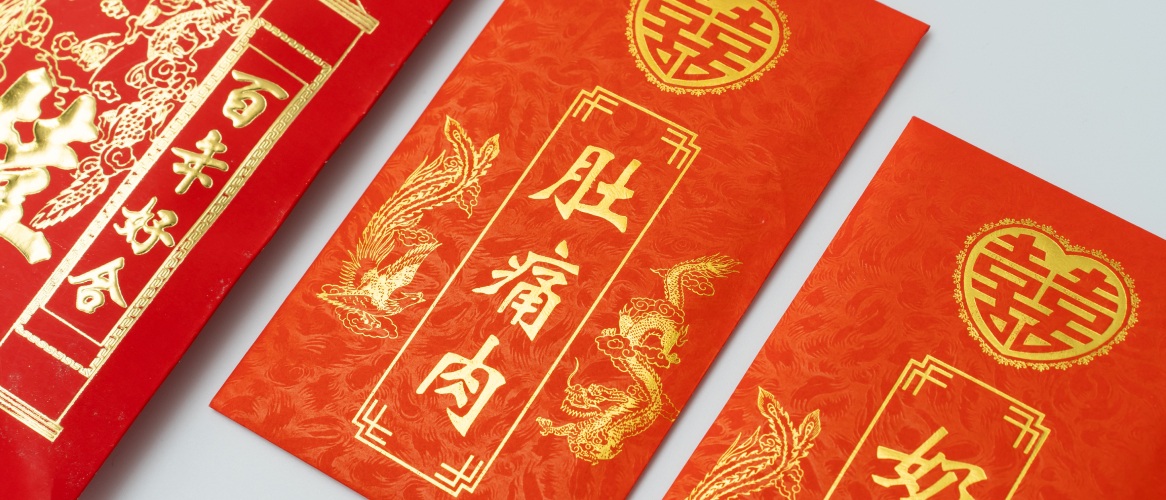
China
While there are almost no examples of engagement rings being used in classic Chinese culture, this western approach to marriage has been adopted in recent years. Betrothed couples now take a hybrid approach between this, and the more standard method of offering gifts or money to the bride’s family.
Argentina
In Argentina, engagement rings are the star of the show – even after the wedding is done. Unlike in many other cultures where couples exchange their engagement rings for wedding bands, Argentinian couples choose to retain their engagement rings, symbolising the enduring bond between them.
Sweden
In this Nordic country, it’s official policy for men and women to both receive rings, with brides-to-be expected to go out and buy a ring for their husband in much the same way as their partners would for them.
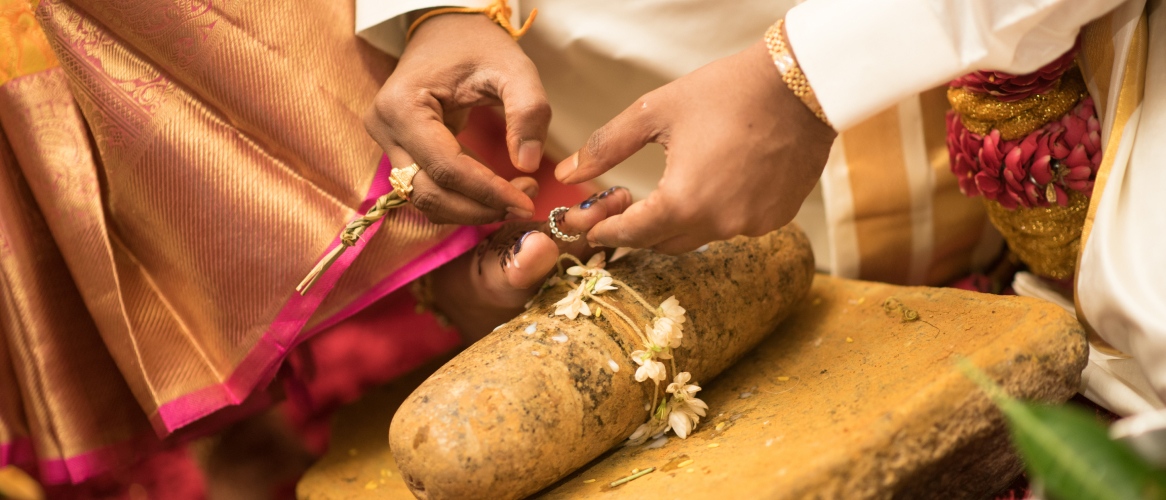
Hindi rings
In Hindu culture, rings are worn but usually on the toe rather than the finger. These beautiful bands, known as bichirs, can be crafted from a variety of materials and not limited to traditional metals.
Famous engagement rings
While personal style should always take precedence, there's no denying the influence of celebrities and royals in shaping our fascination with weddings and engagement rings. We follow their lives, their fashion choices, travel destinations, and, perhaps most relevantly, how they express their love.
For those seeking inspiration from famous figures past and present, let's explore some of history's most famous engagement rings:
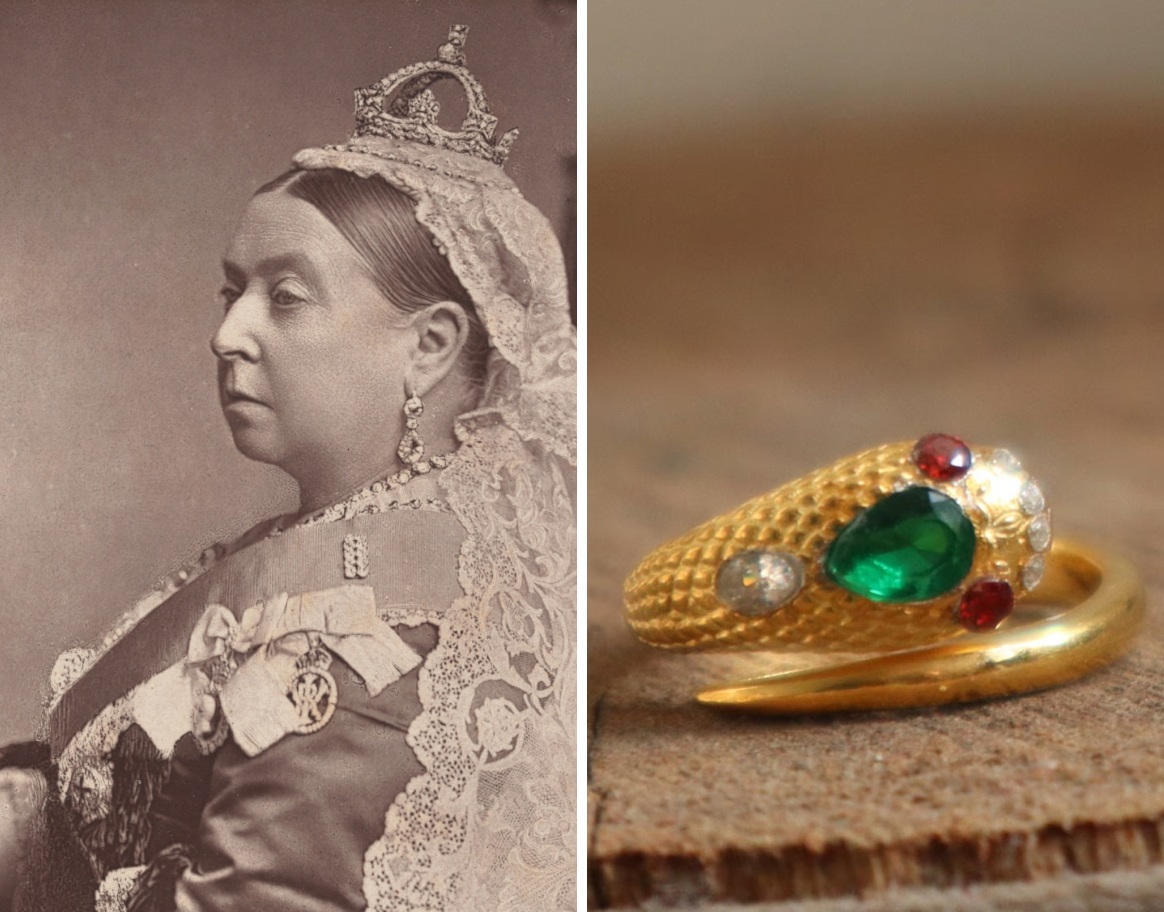 Replica Ring
Replica Ring
Queen Victoria
During the Victorian era, engagement rings experienced a surge in popularity as new resources and mining techniques provided a wealth of precious gems and metals. Queen Victoria herself played a pivotal role in shaping engagement ring trends, with her iconic 18-carat gold serpent ring. Designed by Prince Albert, it featured a serpent with red ruby eyes, a white diamond mouth, and a green emerald head, inspired by ancient Roman designs.

Acrostic rings throughout the ages
These rings use the first letter of each gemstone to spell out a word or message, and became popular in the 18th and 19th centuries thanks to Jean-Baptiste Melleri who designed an engagement ring for Marie Antoinette. Perhaps the most famous acrostic ring was that of Alexandra of Denmark. Gems of beryl, emerald, ruby, topaz, and jacinth were used to spell out the name “BERTIE” – her pet name for her husband, King Edward VII.
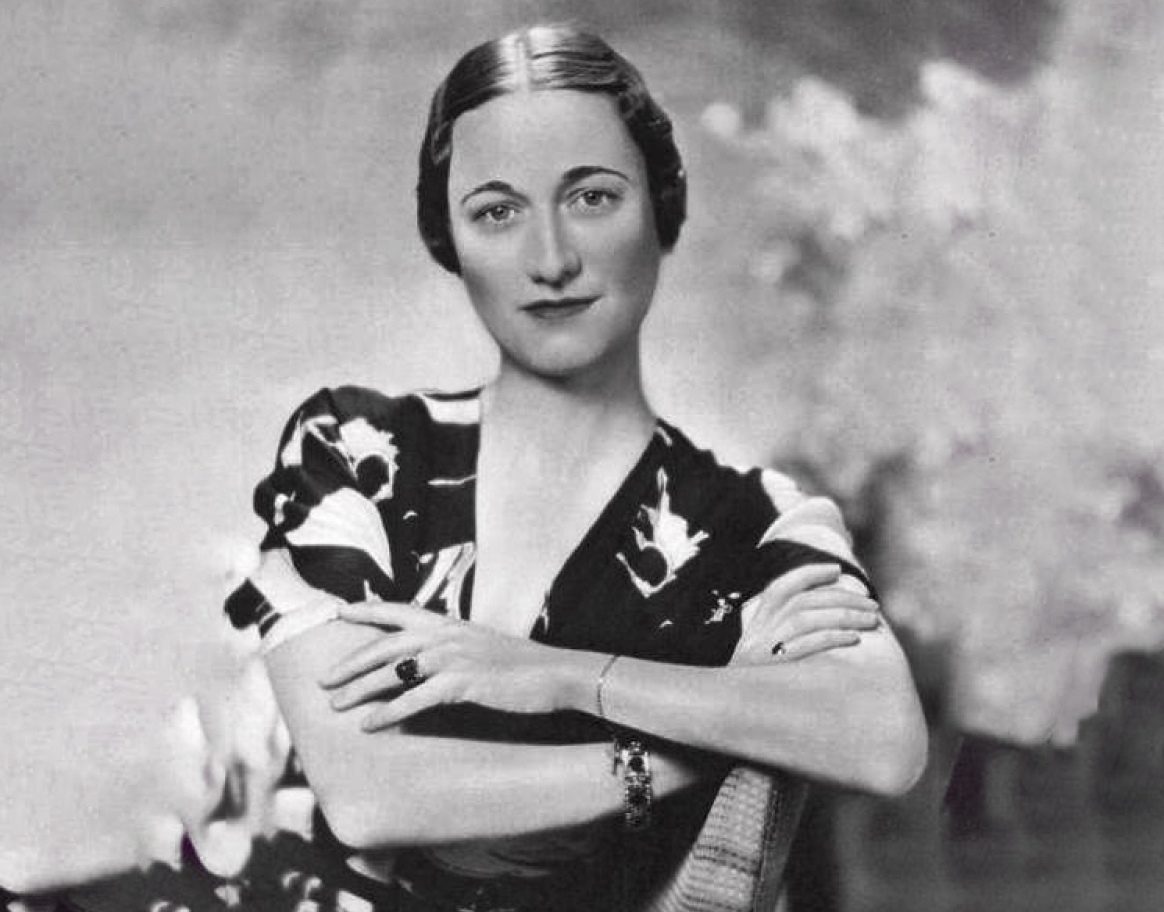
Wallis’ Emerald
King Edward VIII caused a stir when he announced that he was marrying actress Wallis Simpson – a decision, owing to her history of divorce, which would see him abdicate the British throne. Her famous emerald ring had a stylised leaf border, with 14 brilliant cut diamonds set around the central gem. It was inscribed with the words “We are ours now 27 X 36” – a reference to the date of their proposal. While controversial, the decision to marry Wallis ultimately proved sound, with the couple remaining inseparable until Edward’s death nearly 40 years later.

Josephine Bonaparte
While their marriage ultimately ended in divorce, Napoleon Bonaparte’s dedication to his wife Josephine saw him gift her with a truly unique ring in 1796. The band was decorated with two teardrop gems, one sapphire, one diamond, which merged together to symbolise their hearts joining as one.
Elizabeth Bowes-Lyon
Now more commonly referred to as the Queen Mother, Elizabeth Bowes-Lyon was once queen regent herself. Her oval halo diamond and sapphire ring was highly popular at the time of her engagement in 1923, thanks in no small part to the affection the British public felt for her.
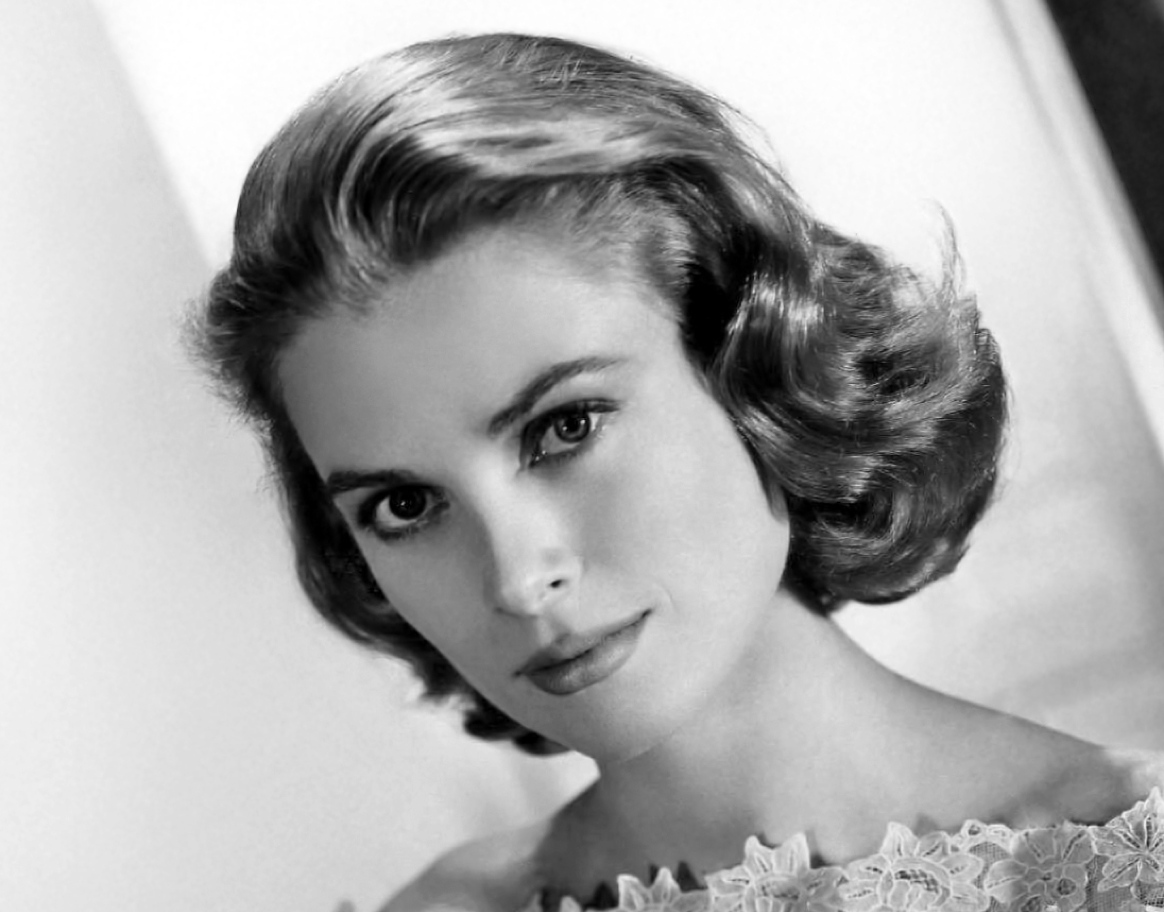
Grace Kelly
Hollywood star Grace Kelly became royalty when she married Prince Rainier III of Monaco. Her emerald-cut diamond of 10.48 carats gained immense popularity during the couple's 1955 engagement and subsequent wedding, which was the first high-profile celebrity nuptial to be televised.
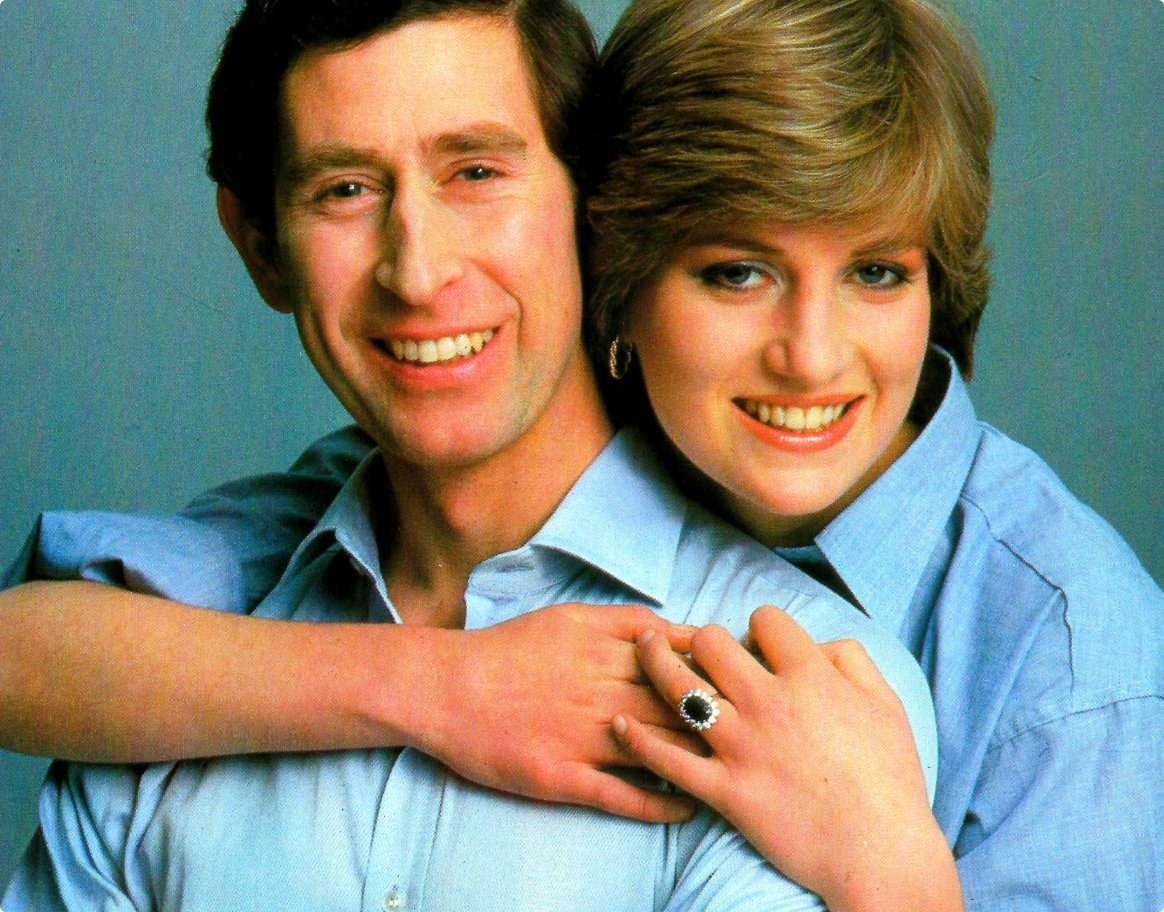 Source: Joe Haupt
Source: Joe Haupt
Diana Spencer and Kate Middleton
The decision by Prince William to propose to Kate Middleton with the same engagement ring his father, Prince Charles, had used back in 1981 was an unprecedented act of sentimentality and sustainability. This 14-diamond, 12-carat oval blue Ceylon sapphire ring, set in 18 Karat white gold, had already captured the world's attention when Charles proposed to Lady Diana Spencer.
Modern engagement ring trends

Marriage is definitely here to stay. But as the world evolves, so do the trends in engagement rings. Today, couples are embracing a variety of modern styles, materials, and practices to symbolise their love and commitment. Let’s explore what’s trending now, and what the future holds.
Engagement rings statistics for 2024 and beyond
Despite the trend of couples re-evaluating their financial priorities and focusing on more budget-conscious choices for their weddings, engagement rings continue to hold significant symbolic value. A recent survey from Hitched found that 60% of all engagement rings in the UK cost between £1,000-£3,000.
Furthermore, a decent chunk of respondents in a U.S. poll said that they put aside a large amount of their annual budget to front the costs of an engagement ring. The survey found:
24.4%
of respondents were happy to dedicate a large amount of budget to a ring
53.8%
said they’d put aside a modest amount every month
21.8%
said they’d pay a small sum every month to save for a ring
Source: Estate Diamond Jewellery
Meanwhile, there’s a clear trend in respondents having more of a say in choosing their own engagement rings. The Professional Jeweller found:
52%
of respondents had their ring chosen for them
45%
chose their ring from a retailer
3%
were given an engagement ring as a family heirloom
Of the 45% who chose their own ring, 53.3% picked an existing ring from a retailer, while the remaining 46.7% created their own using a bespoke service.
And it seems like engagement bands aren’t just for women anymore. The Knot found 6% of men in heterosexual partnerships wore a ring, while 40% of same-sex marriages saw both parties wearing one during this betrothal period.
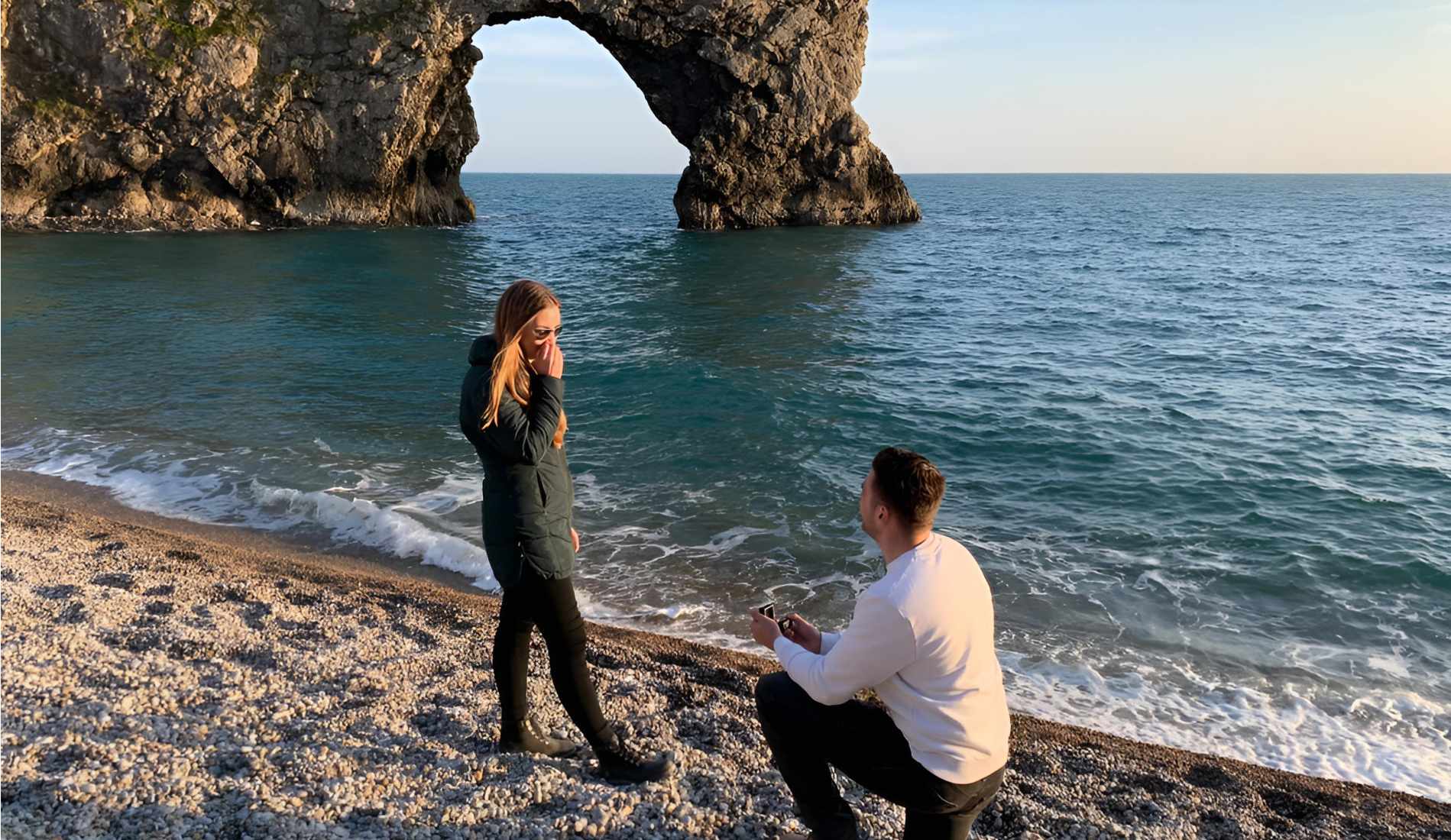
Modern engagement rings standards and practices
The desire to build a lasting partnership, and to symbolise your commitment with a ring, is as relevant as ever. In order to make sure you’re doing everything right in the run up to a proposal, there are some unofficial ‘codes of conduct’ which can help. Here’s a closer look at modern practices, as well as advice on how to find the right ring.
Modern guidelines for buying an engagement ring
In truth, there are no black and white rules on buying an engagement ring but despite this, etiquette has dictated a ‘right’ and ‘wrong’ way to shop for rings for decades. The modern approach to the rules of engagement is a little different. Here are how some of the more traditional methods have been modernised:
Communicating with your partner first
While the exact time and nature of the proposal itself can be kept a surprise, most modern couples feel comfortable discussing their eventual plans to tie the knot. As such, it would be smart to get a clear understanding of the kind of jewellery your partner is drawn to. A recent study found as many as 75% of people being proposed to had a say in the eventual style of ring which was bought. That’s up by 10% from 2015.
Promise rings
These modern alternatives to fully-fledged engagement rings are a fantastic way to demonstrate your commitment, without forking out a huge sum for something you’re not totally confident your loved one will like. Instead, a promise ring serves as a stand-in, and means you’re both able to go out and shop together for something your partner will truly love.
Does the proposer still pay?
Times have changed and it’s not unheard of for couples to split the cost of a ring. This should be something that’s agreed on beforehand, with an exact figure in mind before a purchase.
Three months of salary
It was once expected that a man would save three months of his salary to buy a ring. In an age where budgets are slightly tighter, that’s no longer a prerequisite. A modern engagement ring was found to cost an average of $5,500 in 2023, converting to roughly £4,350. And while this number is still high, it represents a salary of just $22k a year, or £17,250, working by the same three-month maths. In reality, the amount you should spend depends totally on your existing financial health and the style of jewellery you’d like – not societal expectations.
More than one person can propose
In an age where marriage is less restricted than ever before, black-and-white rules of engagement have gone out the window. It’s acceptable for anyone to propose in the relationship now, whether they’re a prospective bride, groom, or celebrant. Likewise, both parties can propose at separate times, with the second proposal being more symbolic than logistical.
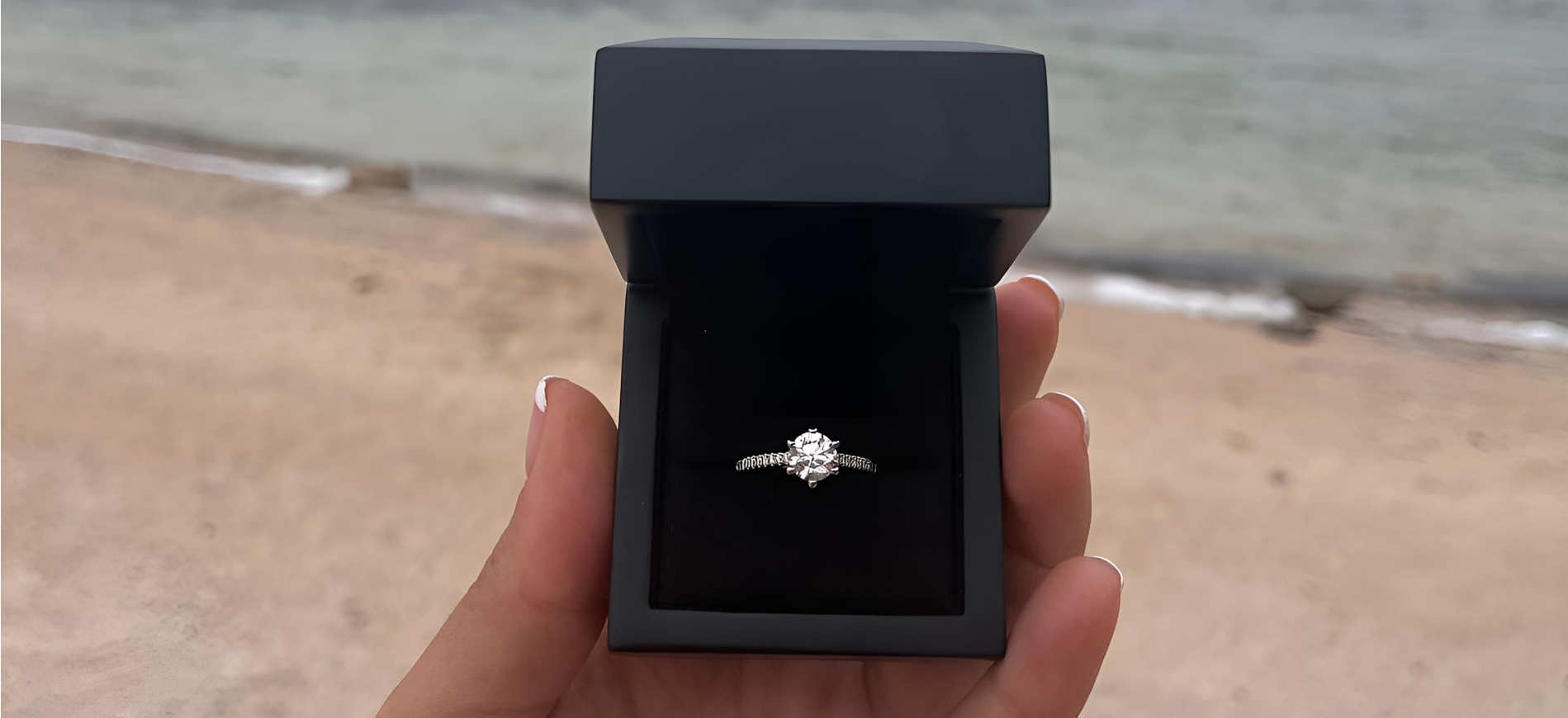
Tips for buying an engagement ring
Even if you do decide to break from tradition, there are still factors that need to be considered to make sure you’re getting the right ring. That’s especially true if you decide to commit to a full engagement ring without any input from your partner. Here are some key factors to keep in mind:
Think about how ethical the stone is
Diamonds have a long history in the jewellery industry, with some being mined from in unsustainable or unethical ways. Educating yourself on ethical mining practices is crucial before making any purchase. If you’re unsure about the history of a specific ring, ask the jeweller first.
Try to know your partner’s measurements ahead of time
While it can be hard to do this subtly if you want it to be a surprise, it’s very handy to know your partner’s ring size before purchasing anything. This will save you the trouble of having to resize it later. A clever way to do this is by borrowing one of their existing rings and having it measured.
Think about how it will pair with any wedding bands.
If you happen to know that your partner is thinking about wearing a specific wedding ring (perhaps a family heirloom), consider how it would pair with your engagement ring. Most people wear both after their ceremony, so the two ideally need to work together.
Think about your partner’s priorities
We all have different priorities in life, and the same is true when it comes to jewellery. If your partner has more modest tastes, and would prefer you spend your money elsewhere, it’s important to respect their wishes – even if you do want to spoil them with something special.
Don’t get swept up in trends
While trends are certainly fun, they do tend to be temporary. Timeless options that age with grace (or preferably not at all) tend to be smarter investments in the long term.
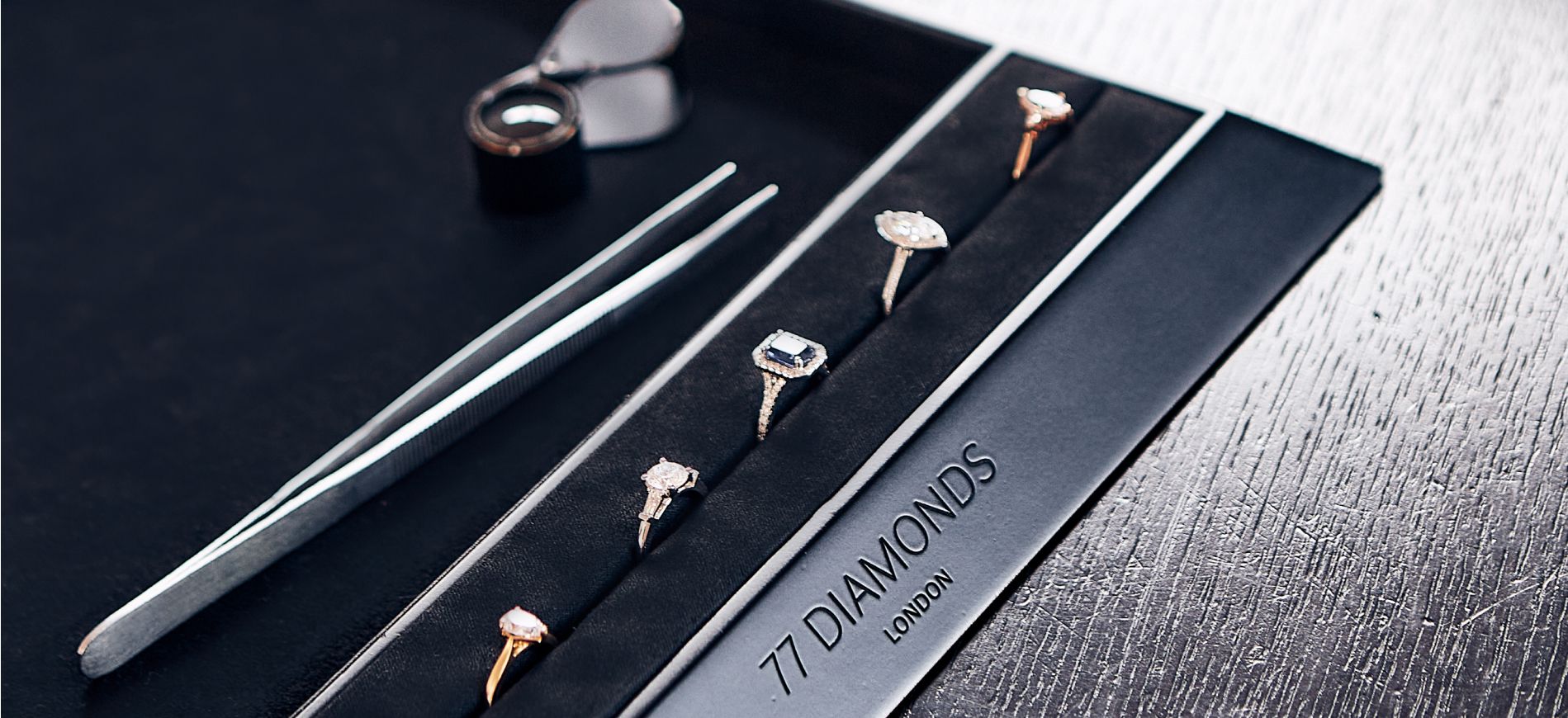
How to choose an engagement ring
With all that advice taken into account, it’s time to take the plunge. Committing to a final choice can be nerve-wracking. If you’re still unsure how to make the final call, consider all of the following:
Look at their existing rings
Just as sizing a ring can be done with the use of their existing jewellery, you’ll be able to find design inspo in their jewellery box too. Look at what they wear already, and try to find something that looks similar in colour and cut.
Talk to a professional
Sitting down with a professional jeweller will also make any decision that little bit easier. This can be very useful if you’re someone who’s completely unfamiliar with different cuts, gems, metals, or settings. They’ll be able to judge what works well together, and even give recommendations based on your partner’s skin tones.
Use an online tool
If you want to try playing around with your options, you can use online tools to play around, work out what looks good, and create a rough design. While it may be costly to have this made by commission, you could use it as the basis for the ring when you shop.

How to wear an engagement ring
It could be that you’re the one receiving the ring, or that you’ve decided as a couple to both wear one. While in the past you would have had just one option here, the contemporary approach provides a handful – literally. Here are some popular ways to wear a modern engagement ring:
Traditional approach
This method sees you put on your wedding ring first (closest to the heart) with the engagement ring stacked on top. This can sometimes be incorporated as part of the ceremony.
Chronological approach
This way sees the engagement ring kept on the bottom of the stack, because it was the first ring placed on the hand to begin with. This is a good approach if you have a particularly large gem on your engagement ring, but a smaller wedding band.
Unconventional approach
Modern ways of wearing rings differ a lot from the past. It’s not uncommon for newlyweds to wear their rings on the right hand, or even random fingers. Some even have their engagement ring on one hand and their wedding band on the other.
It’s important to remember there’s no real right or wrong way to wear a ring. When all is said and done, it’s up to the wearer to decide how they want it to look on their body.
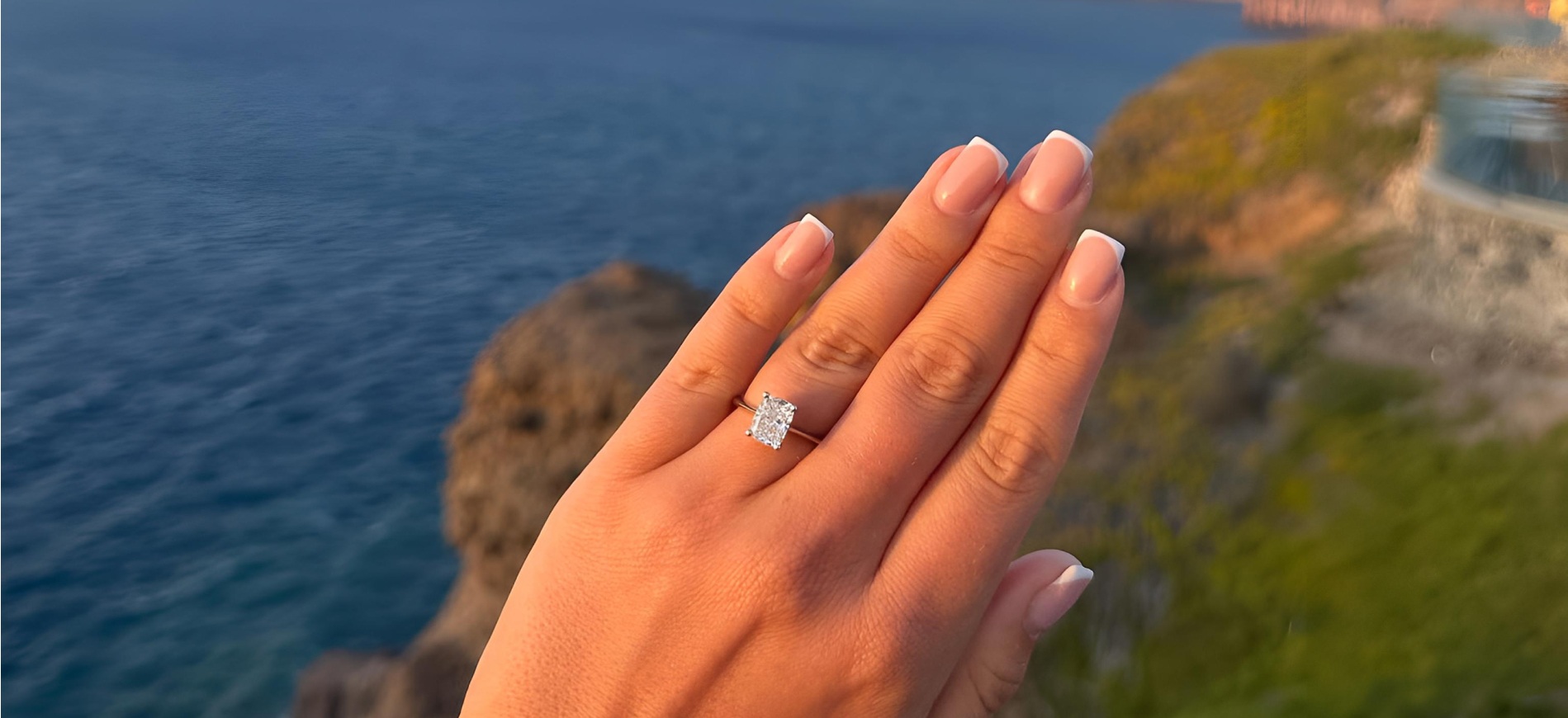
Future trends for engagement rings
While it’s impossible to ever really know what the future holds, these are the contemporary trends that we think might take off in earnest in years to come:
Coloured gemstones
As more couples continue to break with tradition, the idea of a brilliant white diamond as the only option for an engagement ring has become a thing of the past. The vibrancy of coloured gemstones makes them a popular option in an age where couples want to make a statement and showcase their personalities.
Stacking rings
These unique rings make it possible to really play with design and shape. Stacking rings are thin, and work to make the central stone the star of the show. This allows a wearer to experiment with different shapes and sizes.
A focus on ethics
More emphasis than ever is being placed on ensuring gems are sourced in an ethical manner. For some, this has become the priority over the quality or look of the ring itself. As such, it’s likely that lab-grown diamonds will continue to grow in popularity.
The return of antique diamonds
For some, a heritage piece with one-of-a-kind character has now become a priority. This style screams class, with wearers able to renovate old bands with new metals without compromising on the quality of the gem itself.
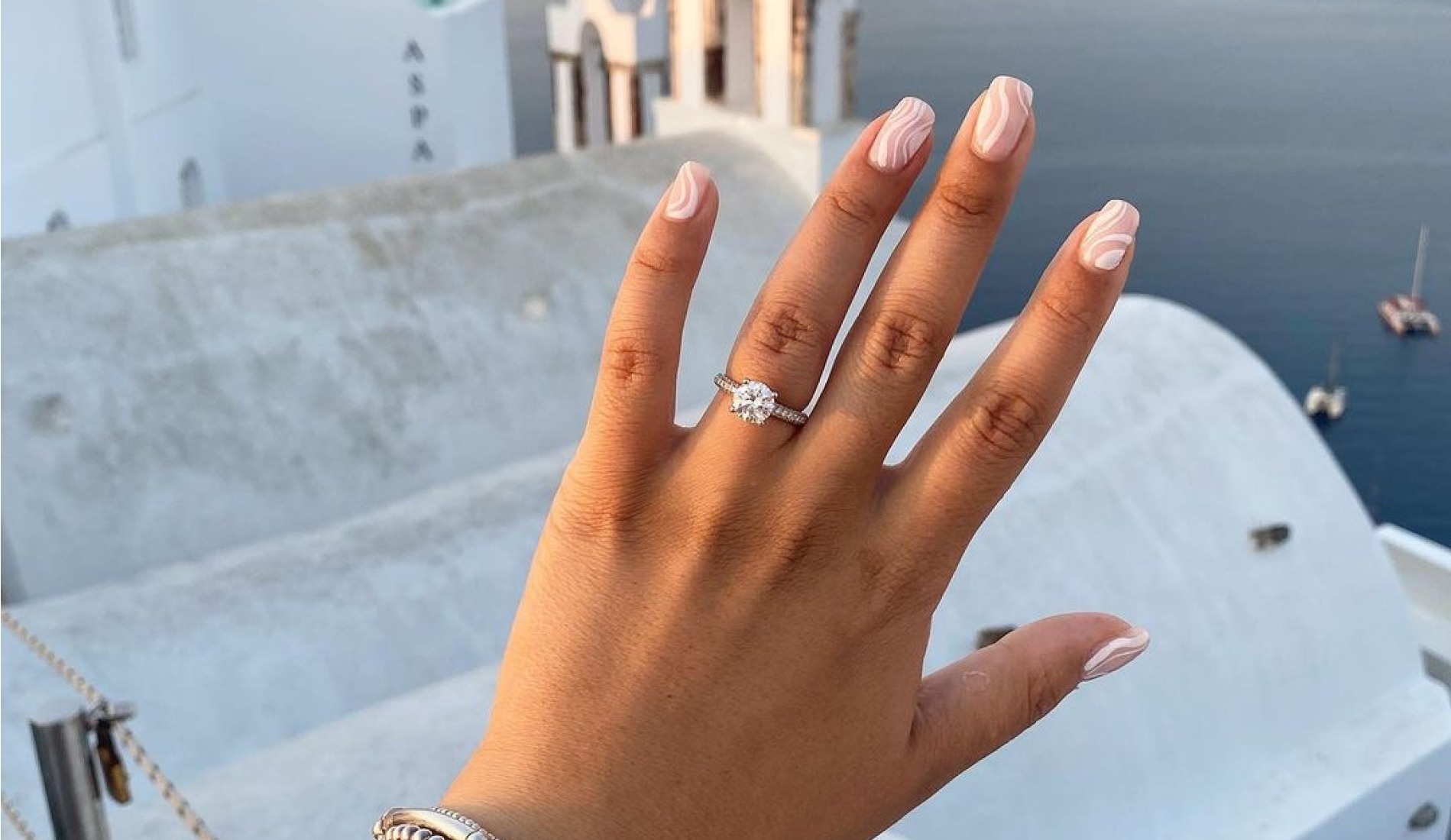
Useful Links

Engagement rings and our relationship with them is fascinating, and ever-changing. If you’d like to learn more about how this beautiful piece of jewellery has changed and shaped our relationships, browse some of these secondary sources.
-
The 12 Most Popular Diamond Shapes for Engagement Rings
https://www.brides.com/engagement-ring-cuts-5079122
-
Ethical diamonds: What Conscientious Consumers Need to Know
https://www.diamonds.pro/education/ethical-diamonds-conscientious-consumers-need-know/
-
Creating an Ethical Engagement Ring: the Complete Guide - Gem Society
https://www.gemsociety.org/article/ethical-engagement-ring/
-
How To Buy an Engagement Ring Your Partner Will Actually Love
https://www.theknot.com/content/engagement-ring-buying-steps
-
Online Wedding Planning Assistant
https://planning.wedding/
-
How to Choose the Right Jewelry for Your Skin Tone and Face Shape
https://www.wikihow.com/Choose-the-Right-Jewelry-for-Your-Skin-Tone-and-Face-Shape
-
Design Your Own Engagement Ring | 77 Diamonds
https://www.77diamonds.com/engagement-rings


